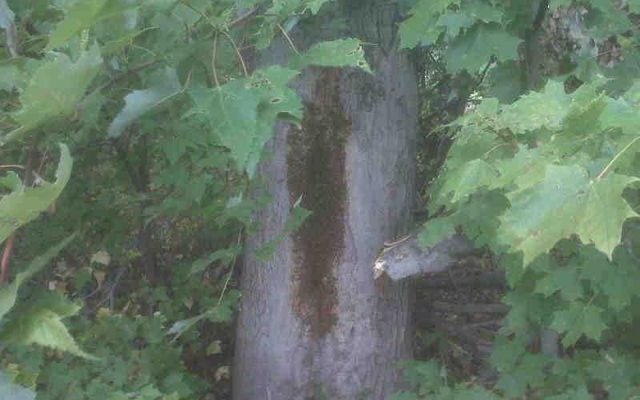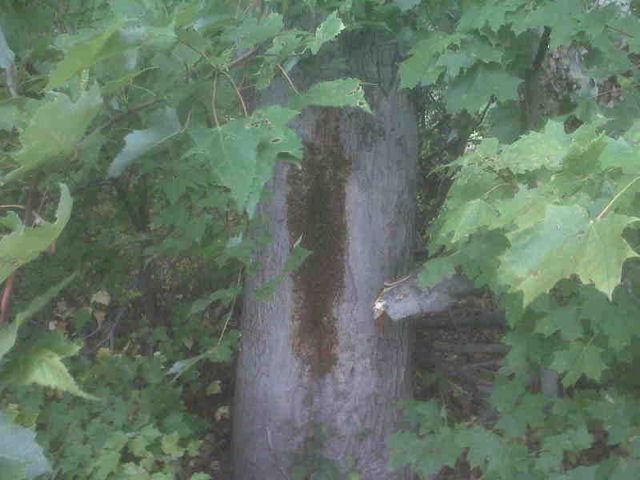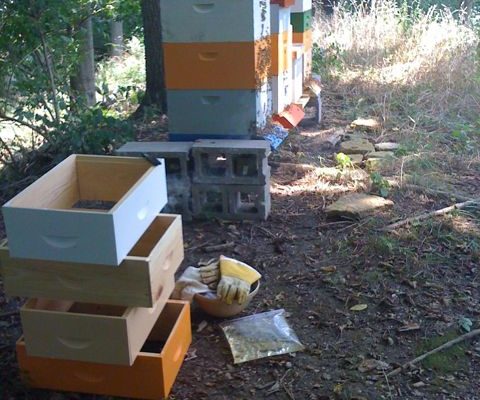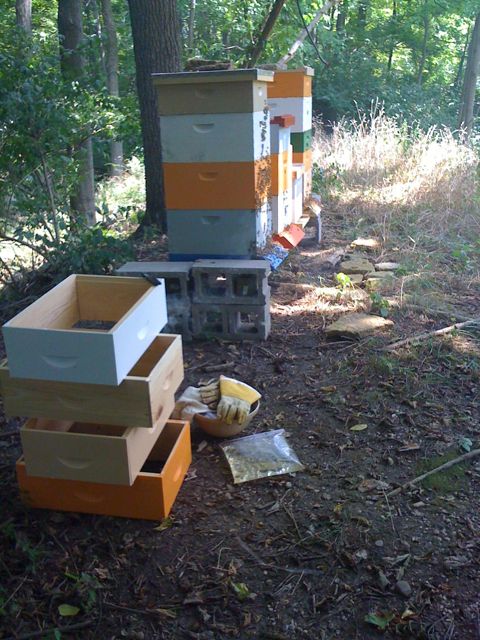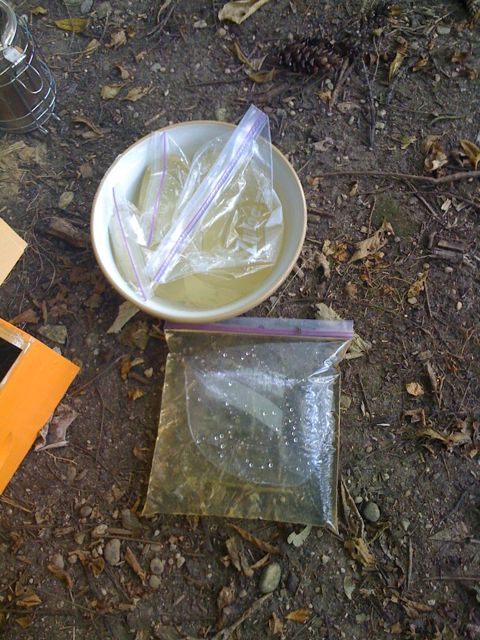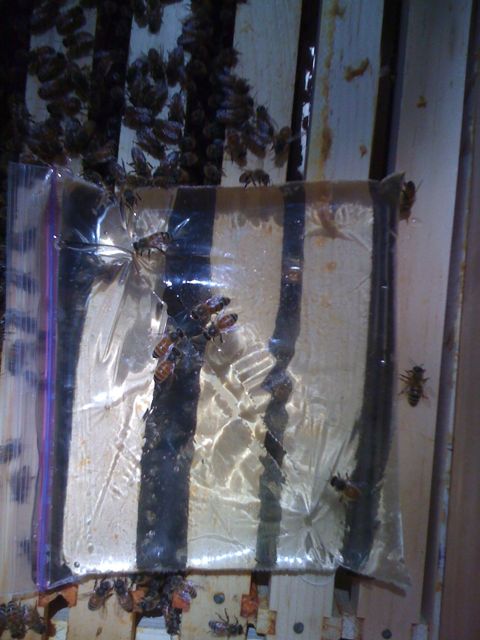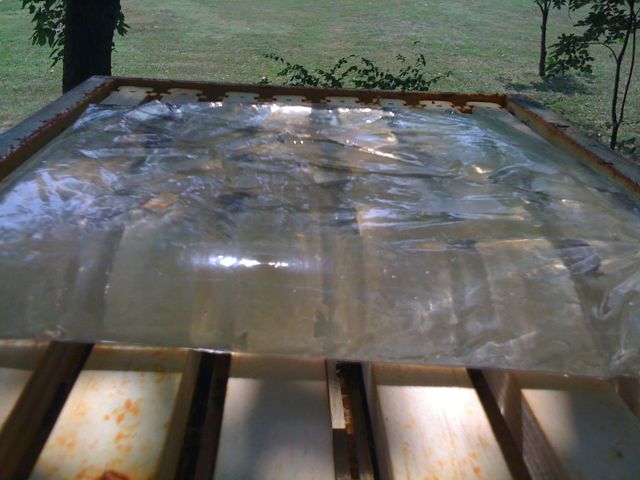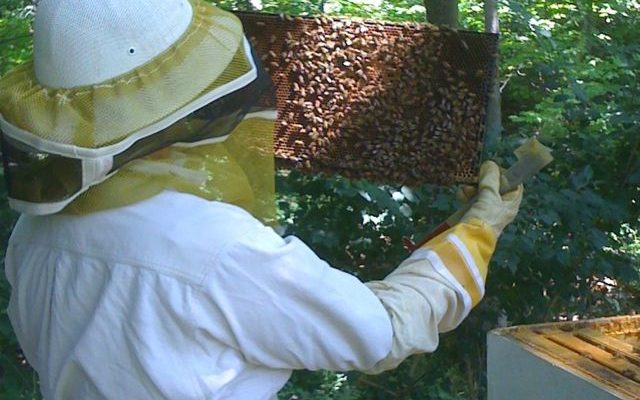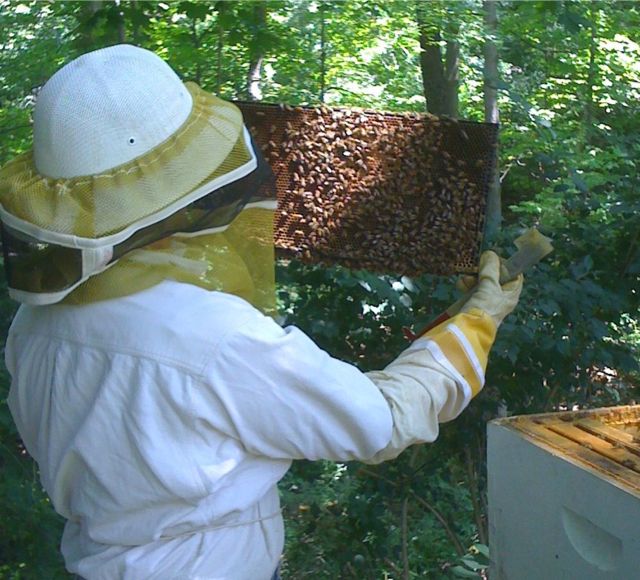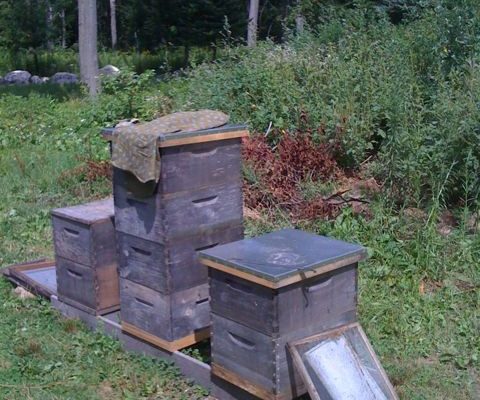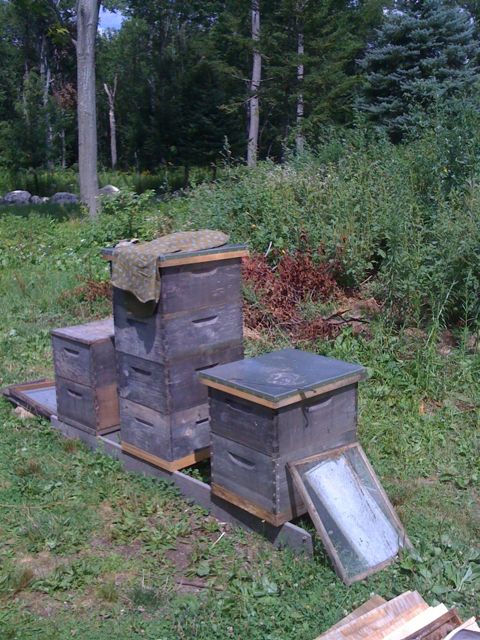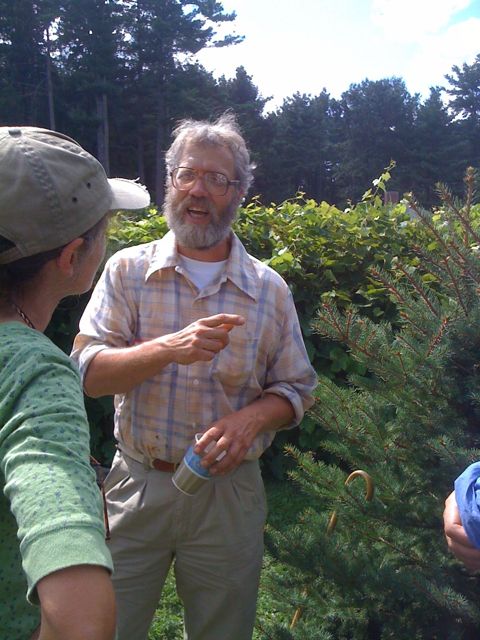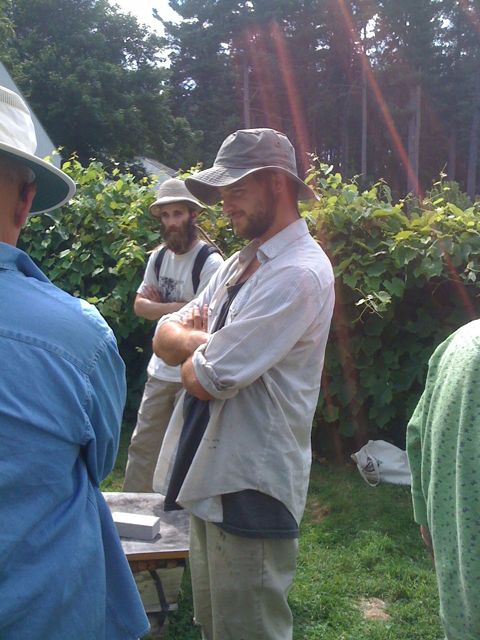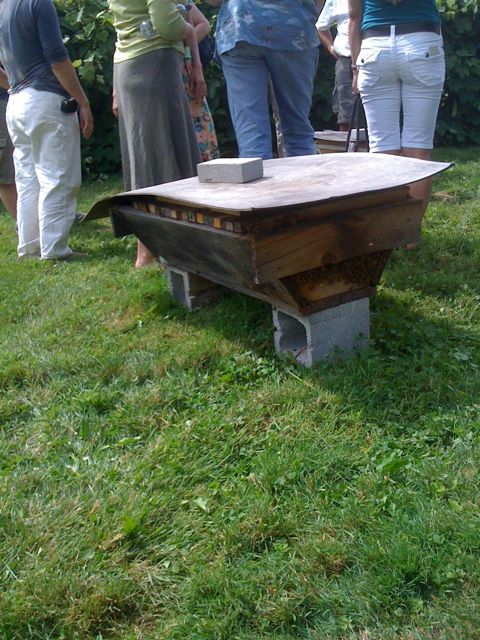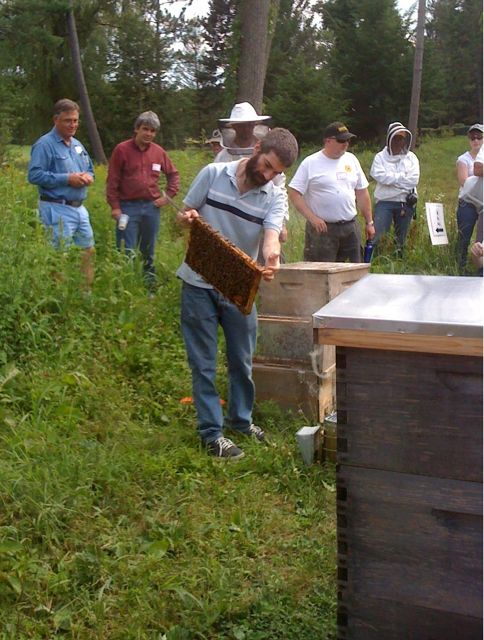You know I went to check out the bee tree, right? Well, for some reason, I thought I was heading to some guy’s house. I thought he had a tree on his property near some field he’d mown down to serve as a picnic area he’d planned on renting out.
Instead, I drove up to a HUGE company in Batavia. I was flabbergasted that I’d envisioned it so wrong. The chief engineer walks out to meet me and takes me back to the very very nice employee picnic area…off of which is a big old tree full of bees.
I told the guy that I couldn’t solve his problem unless they took the (almost dead) tree down…it’s dropping big branches around the picnic area anyway. So, the guy says, “Well, are you willing to get with an arborist and work up a proposal to take the tree down and remove the bees?” I thought about it for a minute. I realized that this thing just keeps opening up more opportunities for me, so I said, “Sure.” And now I’ve got a project.
My beekeeping friends say that this is a bad time to be taking bees from a tree. But this guy wants these bees gone right now…his employees can’t really enjoy their picnic area with all the bees visiting their soda cans and sandwiches.
I could try to talk him into doing all of this in the spring; then again, what do I have to lose by trying my hand at it now? Yes, I could lose the bees. But I lose bees anyway.

